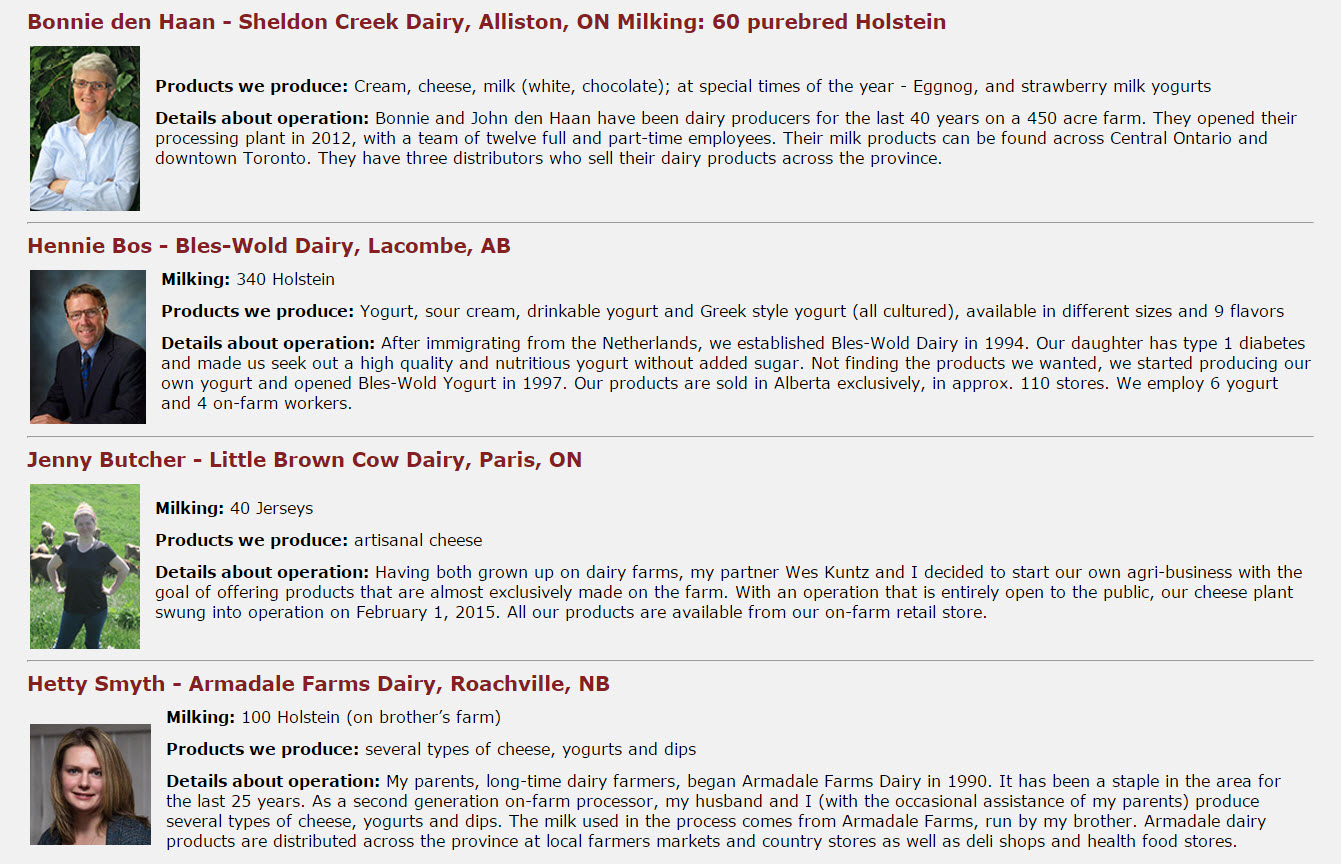The panel members included Bonnie den Haan (BdH) from Sheldon Creek Dairy in Alliston, Ontario, Jenny Butcher (JB) from Little Brown Cow Dairy in Paris, Ontario, Hennie Bos (HB) from Bles-Wold Dairy in Lacombe, Alberta and Hetty Smith (HS) from Armadale Farms Dairy in Roachville, New Brunswick.
On farm expansion vs. on-farm processing
HS: To start an on-farm processing business nowadays is quite an investment. The equipment you’ll need to make it compatible with CFIA regulations is extensive. Do your research and it should help you make your decisions.
BdH: Starting an on-farm processing plant is totally different than farming. To cross the two you’d have to look at the core competencies of people coming on. Are any of them interested in marketing? Or interested in being a place with hair nets and rubber gloves? You have to look at if you have people interested in doing that work.
JB: We found the economics of on-farm dairy processing are really similar to that of a dairy farm. They may be a million dollar initial capital investment and your marginal cost of the next litre you make on your farm is really great. It makes sense to expand anything that you do.

On the steps taken to open an on-farm processing facility
JB: Before you even think about doing anything you need to approach OMAFRA saying your plan makes sense to them and you can alter the facility you’re at or building a new one. One of the common denominators is time. There’s a lot of bureaucracy and patience. In farming you just do things and in processing you have to wait for the paperwork to show up.
BdH: It is a long process but OMAFRA does help you along the way. Phone them up and get them to send you the paperwork that details what your plant needs to look like. All the regulations are there.
HB: In our situation we built our plant in an old barn and we want to stay ahead of the CFIA inspectors. We had a lot of cooperation from Alberta agriculture, helping us along with technical issues. It’s hard work and don’t give up.
HS: Health regulations vary from province to province. It’s supposed to be the same but it isn’t. Keep that it in mind.
On whether or not all the milk leaves the farm
HS: We use about 10 to 15 per cent of our farm’s milk. The rest is shipped to Dairy Farmers of New Brunswick.
JB: That’s a huge advantage of supply management. We can use whatever milk we choose to use because it’s through the quota system. Being a part of supply management means we can contact DFO and tell them our needs for the week. We’re at about 20 per cent.
BdH: We’re at 50 to 60 per cent of our quota depending if we make egg nog or not.
HB: It varies between 5 and 10 per cent of the total milk production.
Click the play button below to listen to the farm panel in its entirety.